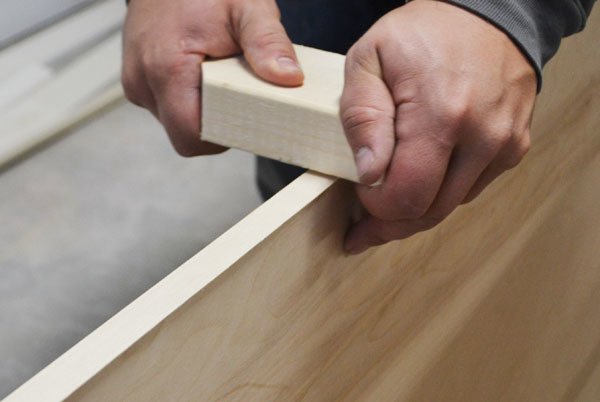What Is Edge Banding? And Best Edge Banding Tips In 2023
hoaict - Jan 03, 2023

What Is Edge Banding?
Edge banding is a process in which a thin strip of material, such as wood veneer, PVC, or metal, is applied to the edges of a piece of wood or other material to cover or protect the edge. It is often used to cover the raw edges of plywood or other composite materials, or to create a finished look on furniture and other wood products. Edge banding can be applied by hand or with a machine, and it is typically bonded to the edge of the material using an adhesive. In some cases, heat or pressure may be used to ensure a strong bond between the edge banding and the material to which it is being applied. Edge banding is a common technique in the woodworking and furniture-making industries, and it is used to create a variety of products, including cabinets, tables, desks, and bookshelves.

Edge banding tips
By following these tips, you can achieve a professional-quality finish when working with edge banding. It's important to take your time and pay attention to detail to ensure the best possible results. If you are not comfortable with the process, it may be a good idea to hire a professional to handle the job. Here are a few tips for working with edge banding:
Choose the right material: Select an edge banding material that is compatible with the panel or board you are covering and the overall style and design of the piece. Wood, plastic, and metal are all popular options for edge banding, and each has its own advantages and disadvantages.
Measure and cut accurately: Measure the length of the edges you are covering and cut the edge banding material to size. Make sure to allow for enough overlap at the corners and ends of the panel or board. Use a straight edge or a ruler to ensure straight, accurate cuts.
Apply the glue evenly: If the edge banding material is not pre-glued, apply a thin layer of wood glue to the edge of the panel or board. Spread the glue evenly and avoid applying too much, as excess glue can squeeze out and create a mess.
Clamp the edge banding firmly: Use clamps or other clamping devices to hold the edge banding in place while the glue dries. Make sure to clamp the edge banding evenly and firmly to ensure a secure bond.
Trim and sand carefully: Once the glue has dried, use a trim router or a hand-held trimmer to trim off any excess edge banding material. Be careful not to damage the edge banding or the panel or board as you trim. Use a sanding block or sander to smooth out any rough edges or imperfections on the edge banding. Sand evenly and remove any excess glue or debris that may have squeezed out during the attachment process.
Finish and protect the edge banding: If desired, you can apply a finish to the edge banding to protect it and enhance its appearance. Choose a finish that is compatible with the edge banding material and the overall design of the piece. Be sure to follow the manufacturer's instructions for applying the finish and allow the finish to dry completely before using the piece.
Featured Stories

Review - Aug 23, 2025
Revolutionize Your Communication: How to Buy Virtual Numbers on Telegram

Review - Jun 25, 2025
Windows 11 Problems: Is Microsoft's "Best" OS Actually Getting Worse?

Features - Jun 18, 2025
Best Mobile VPN Apps for Gaming 2025: Complete Guide

Review - Jun 18, 2025
Nintendo Switch 2 Review: A Triumphant Evolution Worth the Wait

Mobile - Jun 12, 2025
Best Gaming Phones 2025: Top Devices for Mobile Gaming

Mobile - Jun 12, 2025
Vivo T4 Ultra Debuts with MediaTek Dimensity 9300+ Chipset

Gadgets - Jun 12, 2025
Lava Prowatch Xtreme Launches with Google Fit Integration

Mobile - Jun 08, 2025
Realme GT 7T Review: Power Meets Endurance in Controversial Style

Mobile - Jun 07, 2025
Realme C73 5G Launches in India: Budget 5G Phone Starts at ₹10,499

Review - Jun 07, 2025
Comments
Sort by Newest | Popular